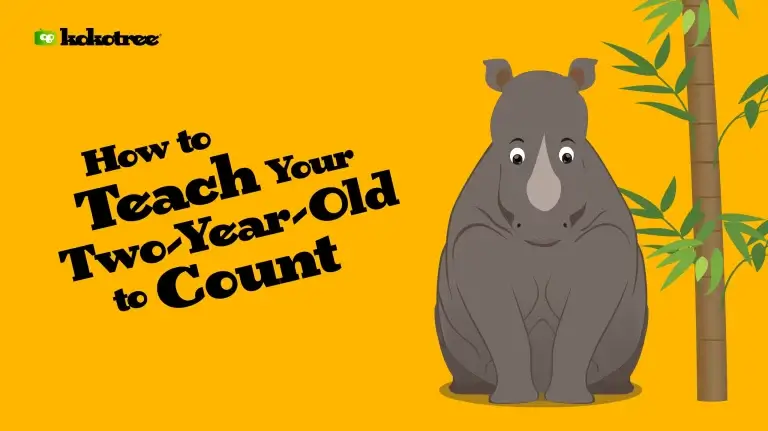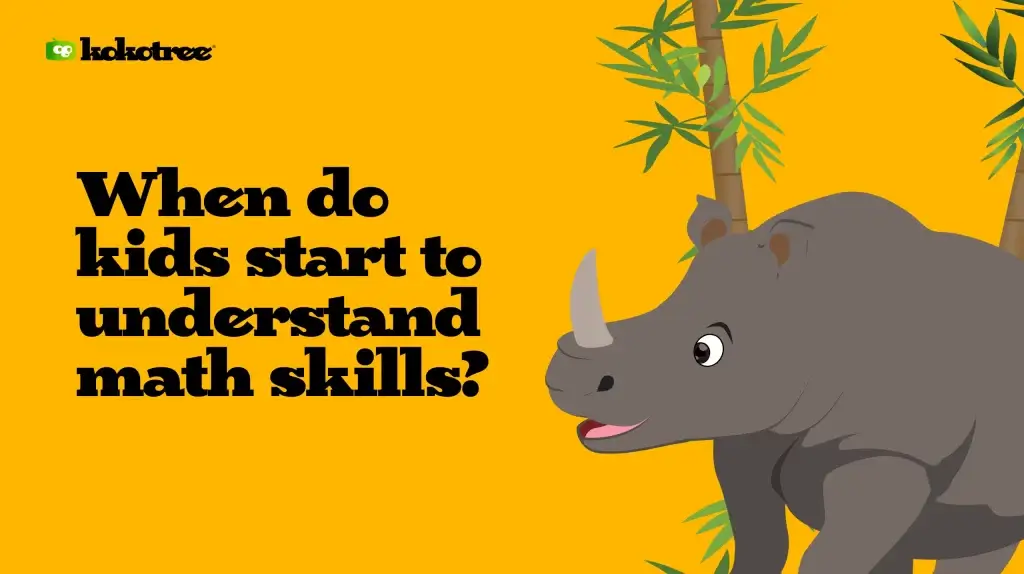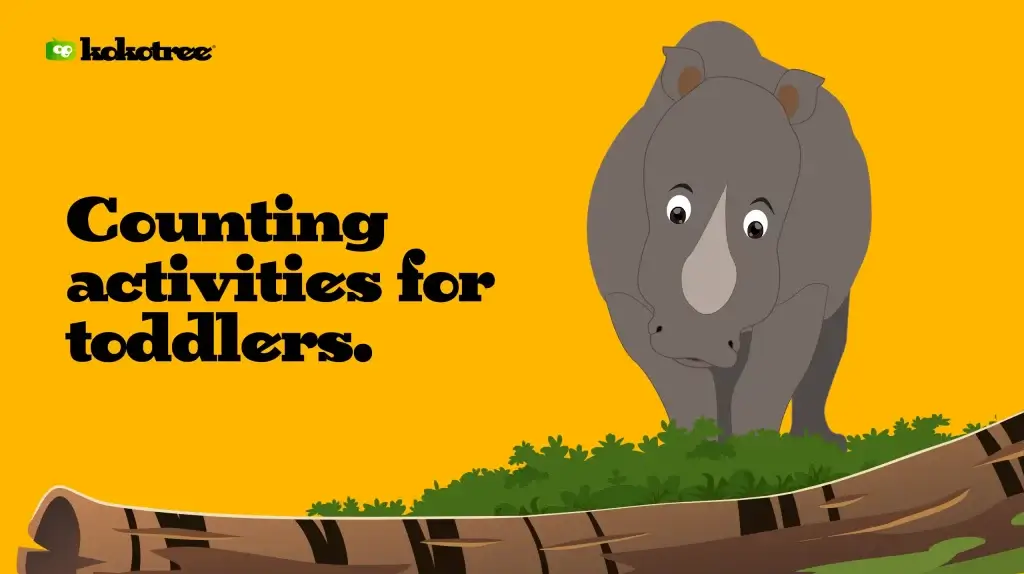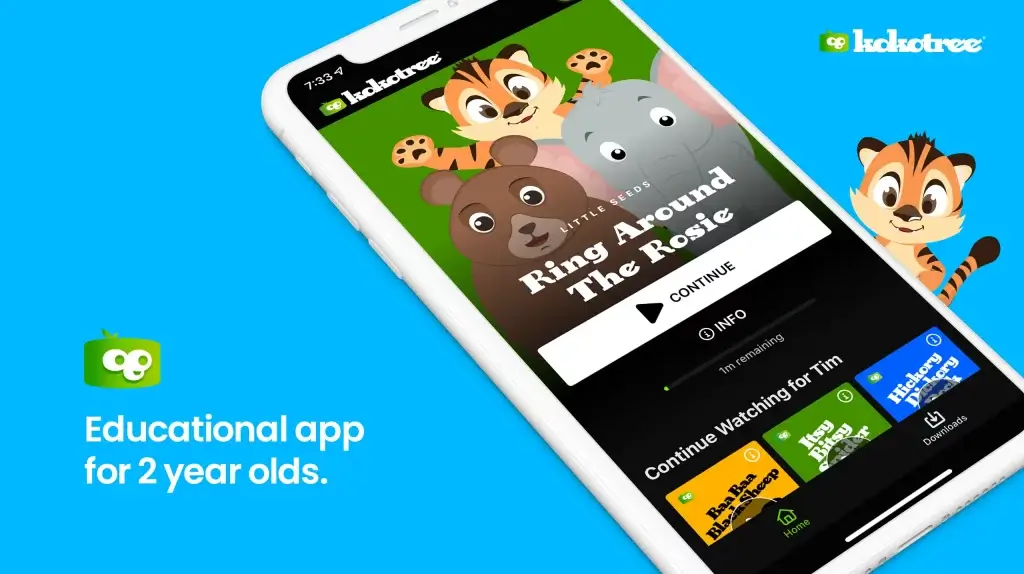

Written by: Kokotree
Last updated:

It’s never too early to start teaching your child essential skills, and counting is one of the most fundamental.
Teaching your 2-year-old how to count can help them develop a strong foundation for preschool math skills down the road.
Educators and parents usually start teaching kids to count when they are around two years old.
Most children are just beginning to learn how to use language and follow simple commands at this age.
You can start teaching them counting by using everyday objects such as toys, food, or buttons on their clothing.
When you’re introducing the concept of counting, make sure to keep it fun and engaging.
Use a lot of animation and praise your child when they succeed. You can also make it into an educational game, such as seeing how many times they can count to 10 in a row.
If you find that your child is struggling to catch on, don’t get discouraged. Just keep practicing counting with them every day, and eventually, they’ll get the hang of it.

There is no definitive answer to this question, as children develop at different rates. However, most experts agree that basic math skills are typically acquired between the ages of three and five.
Many children will begin to understand simple concepts such as counting and matching by age three and will be able to perform more complex operations such as addition and subtraction by age five.
Some children will learn these skills earlier or later than others, but most will have a basic understanding of math by the time they enter kindergarten.
One of the most rewarding things you can do as a parent is to teach your child something new.
Seeing the look of excitement on their faces as they finally understand a concept that you’ve been working on with them is an incredible feeling.
Teaching your child to count is a great way to help them develop their math skills and begin to understand numbers.
It’s also a fun activity that you can do together.
Counting requires the use of small muscles in hand and fingers. As your child practices counting, they will develop the fine motor skills needed for writing and other activities.
To count, your child needs to remember the numbers in sequence. As they practice counting, they will improve their memory and recall skills.
When your child is counting, they are also developing their spatial awareness. They are learning to identify patterns and relationships between numbers and objects.
Counting requires the use of language skills. As your child counts, they will improve their vocabulary and begin to understand how numbers are used in everyday life.
Counting requires the use of analytical and problem-solving skills. As your child counts, they will learn to think logically and solve simple problems.

Get free parenting tips, news, updates, and content from Kokotree.

You can do countless games and activities with your child to help them start understanding how to count. Try starting with simple ones, like counting how many steps it takes to get to the kitchen or how many toys are in their toy box.
You can use anything around you to help teach your child how to count. Use cereal pieces to calculate how many bites they take or how many cars drive by while you’re on a walk.
Counting should be enjoyable for both you and your child. Try incorporating counting into activities your child loves, such as singing nursery rhymes or playing catch.
If your child is having trouble understanding the concept of counting, try using some visual aids. Draw a simple number line on a piece of paper, or use counters or objects to help them physically count each number.
Repetition is critical when teaching anything to a toddler. Count with your child as often as you can, and eventually, they’ll start to catch on.
Counting is a tricky concept for some toddlers to grasp. Don’t get frustrated if your child isn’t picking it up as quickly as you’d like. Just keep practicing, and they’ll get there in time.
When your child is counting correctly, praise them for their achievement! This will help encourage them to keep up the excellent work.
In addition to verbal praise, you can give your child small rewards for counting successes. This could be a sticker chart where they get a sticker each time they count correctly or a special treat at the end of the week if they’ve made good progress.
There are many different ways to count, so don’t be afraid to mix things up. Try counting backward from 10 or even forwards from 20. You could also try using objects of different sizes to help them understand that numbers can represent different quantities.
There are endless possibilities when teaching your child how to count. Get creative and have fun with it!
If your child seems to be struggling, don’t give up! Just keep practicing, and eventually, they’ll get the hang of it.
If you’re still concerned about your child’s progress, check in with their preschool or kindergarten teacher. They can give you some additional tips and advice.
Remember, having fun while teaching your child how to count is the most important thing. They’ll likely pick up the concept if they’re enjoying themselves.
With patience and practice, your child will count like a pro in no time!
Activities to teach your toddler to count.
Counting is one of the essential basic skills that a child can learn. It helps them develop a foundation for mathematics and teaches them about order and organization.

This is just a start – there are endless possibilities for activities that can help your child practice counting! Making it fun and interactive is essential, so your child stays engaged and interested.
With a bit of creativity, you’ll be surprised at how quickly your child picks up this vital math skill.

Yes, mobile educational apps can help children learn to count. Many apps focus on teaching counting skills, and many of them are designed specifically for young children. Some apps use interactive games to teach counting, while others use more traditional methods such as flashcards. Many apps also allow parents to customize the content to better suit their child’s needs.
Kokotree is an educational app for 2-year-olds that uses counting videos to teach basic math skills. Toddlers and preschoolers benefit the most because of the interactive nature of the videos, using repetition, repeating back numbers, and visual aids to help children learn to count. The videos are also entertaining, so kids will want to keep watching and learning. One favorite video that introduces 2-year-olds to counting is Five Little Ducks.
Most 2-year-olds can learn to count to 10 if they are taught in an interactive and fun way. Repetition is also necessary – try counting with your child several times a day in different contexts (e.g., while going up the stairs, during mealtimes, while playing catch, etc.).
There is no one answer to this question since every child develops at their own pace. However, some essential milestones your child should be reaching before you start teaching them to count include understanding and following simple instructions, having an attention span of at least a few minutes, and correctly identifying simple shapes and colors. If your child meets these milestones, they are likely ready to start learning to count.
There is no “best” way to teach a 2-year-old to count. However, some tips that may be helpful include using everyday objects to measure with (e.g., counting how many blocks it takes to build a tower), making it fun and interactive (e.g., playing “Simon Says” with instructions that involve counting), and practicing counting in different contexts throughout the day (e.g., during mealtimes, while going for a walk, before bedtime, etc.).
Learning to count is an important math skill that lays the foundation for more complex math concepts your child will learn in the future. In addition, counting is a handy life skill that can come in handy in everyday situations (e.g., counting how many steps it takes to get to the top of the stairs, counting money, etc.).
There is no one “right” age to start teaching kids numbers. However, most experts agree that it’s best to wait until your child shows interest in and readiness to learn this skill. This may be as early as two years old for some children, while for others, it may be closer to 4 or 5 years old. If you’re unsure if your child is ready, ask your child’s pediatrician or consult a preschool or kindergarten teacher for guidance.
Most toddlers will start to recognize numbers around 2 or 3 years old. However, some children may begin recognizing numbers earlier or later than this. If you’re concerned that your child doesn’t recognize numbers when they should be, talk to your child’s pediatrician or consult with a preschool or kindergarten teacher for guidance.
Most 3-year-olds can learn to recognize and count up to 10. However, some children may be able to recognize and count even higher numbers by this age. If you’re concerned that your child isn’t identifying or counting numbers when they should be, talk to your child’s pediatrician or consult with a preschool or kindergarten teacher for guidance.
It’s generally best to start by teaching your child to recognize numbers before moving on to counting. Once your child recognizes numbers, you can begin working on counting skills. If you’re not sure what order to teach these skills in, ask your child’s pediatrician or consult with a preschool or kindergarten teacher for guidance.
You can start teaching your child to count as soon as they understand and follow simple instructions. Around two years old is a great time to start introducing the concept of counting.
There are many ways you can teach your child to count. You can start by measuring everyday objects such as stairs, cars, or steps. You can also use songs, games, and books to help introduce the concept of counting.
One way to help your child understand that numbers represent quantity is to start with simple counting exercises. For example, you can ask them to count how many children are in the room or how many cars are parked outside. As they get more proficient at counting, you can move on to more complex tasks, such as having them count by 2s or 5s.
There are many ways you can help your child practice counting. You can start by having them count objects around the house or while you are out and about. You can also use games, songs, and books to help them practice counting. Additionally, you can provide opportunities for them to count in real-life situations, such as when cooking or shopping.
If your child is struggling with counting, you can do a few things to help them out. First, make sure that they are practicing counting regularly. You can also try breaking down the task into smaller steps or using different methods to teach them counting. Additionally, you can seek professional help if your child is still struggling after trying these things.
As your child begins to master the basics of counting, they will likely be ready to move on to more complex tasks. You can start by having them count by 2s or 5s. You can also try teaching them to count backward or skip count. If they are struggling with these tasks, you can always review the basics with them before moving on.
One way to teach your child about numbers and quantity is to start with simple counting exercises. For example, you can ask them to count how many children are in the room or how many cars are parked outside. As they get more proficient at counting, you can move on to more complex tasks, such as having them count by 2s or 5s.
In addition to counting, you can introduce a few other math concepts to your child. These include shapes, patterns, and sorting. You can start with simple exercises and then move on to more complex tasks as your child masters the basics.
You can play various games with your child to help them learn about numbers and counting. These include simple counting games, such as those where you ask them to count how many objects are in a room, and more complex games, such as those where you have them skip count or lean backward. Additionally, many commercially-available games can help with number recognition and counting skills.
If you are looking for more resources to help your child learn about numbers and counting, there are a few places you can look. Your local library or bookstore likely has a wide selection of books, games, and other materials that can be helpful. Additionally, many great online resources can be used to supplement your child’s learning.
There is no right or wrong answer to this question. It ultimately depends on your child’s level of interest and ability. If they struggle with counting, starting with smaller numbers might be best, and working your way up. However, you can introduce more significant numbers if they do well with counting. Ultimately, the most important thing is to provide opportunities for your child to practice counting to continue developing their skills.
Counting is an essential skill for children, and you can start teaching them at a young age. By providing regular practice and using fun methods, such as games and songs, you can help your child become proficient in counting.
If they are struggling with counting, don’t worry – plenty of resources are available to help them out. Ultimately, the most important thing is to ensure that your child continues to practice to improve their skills.




